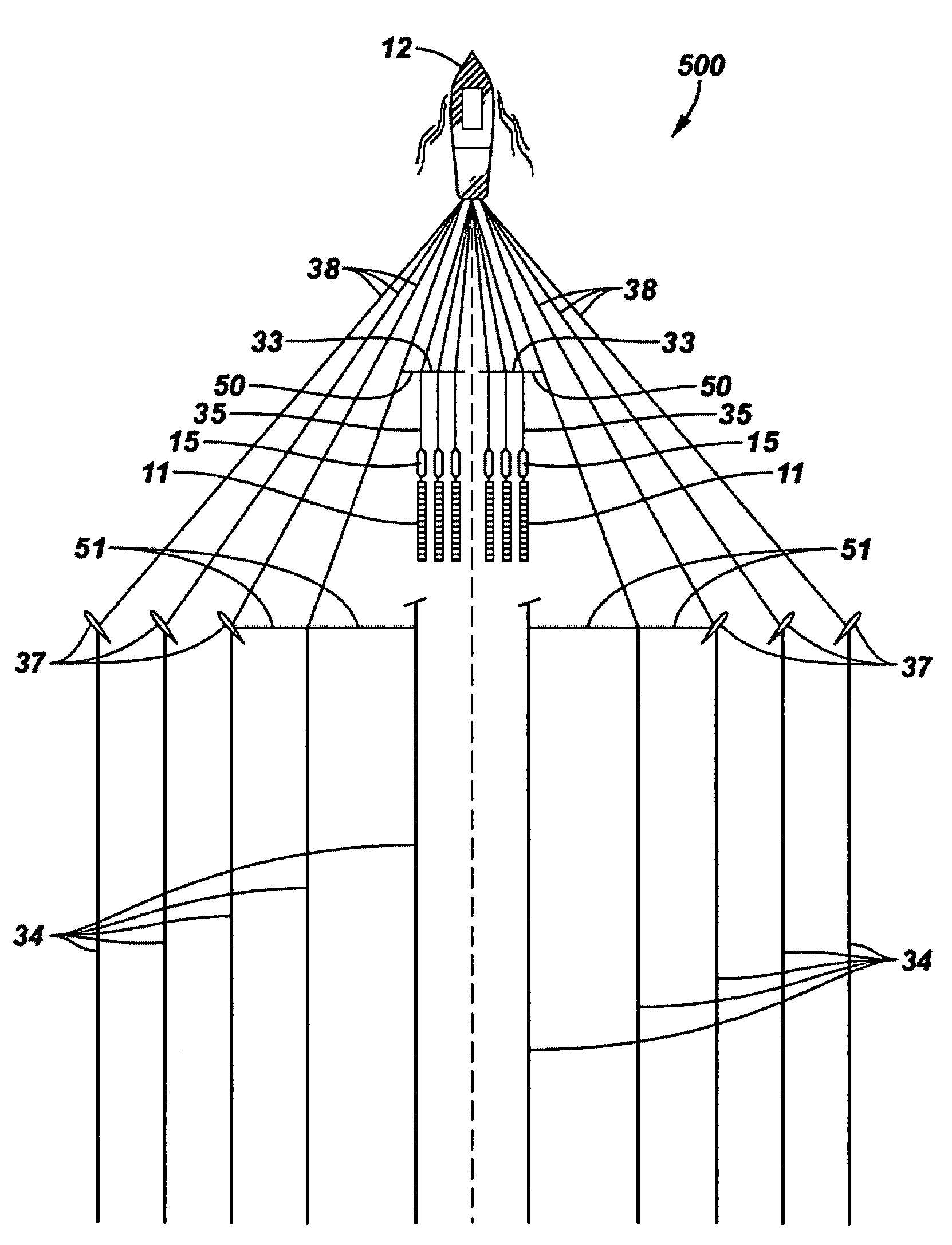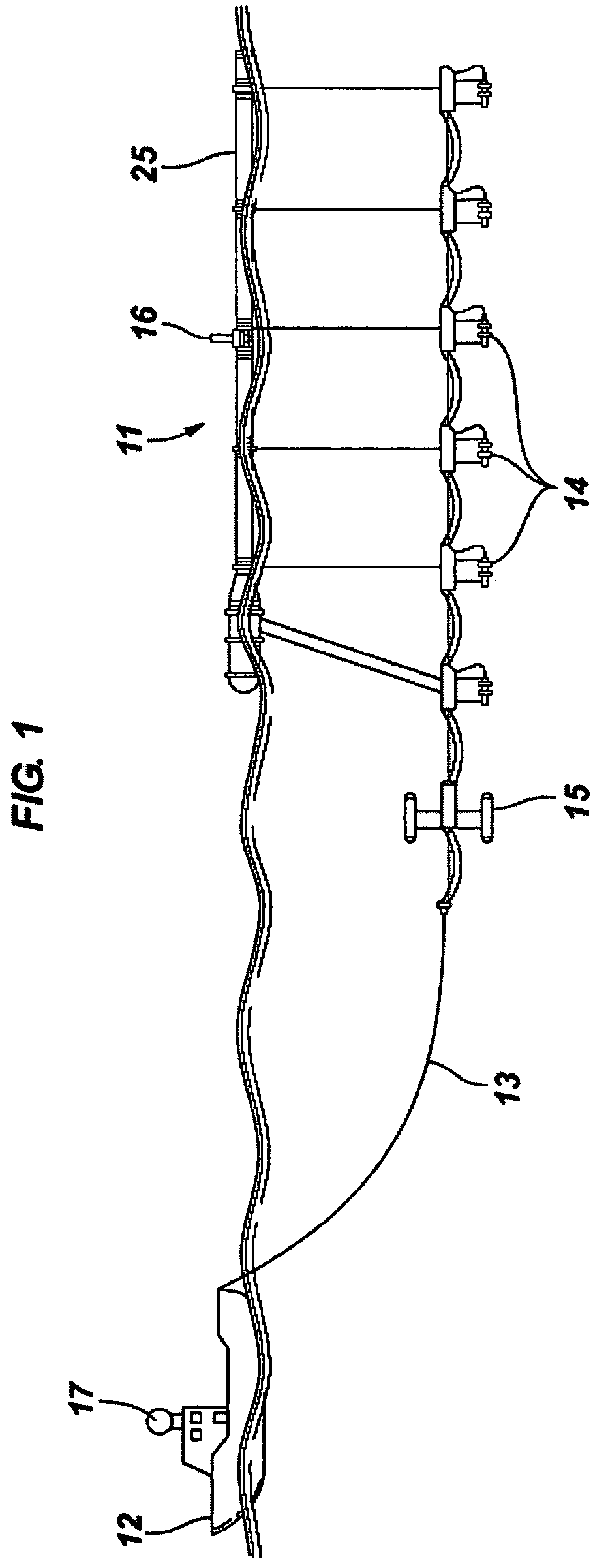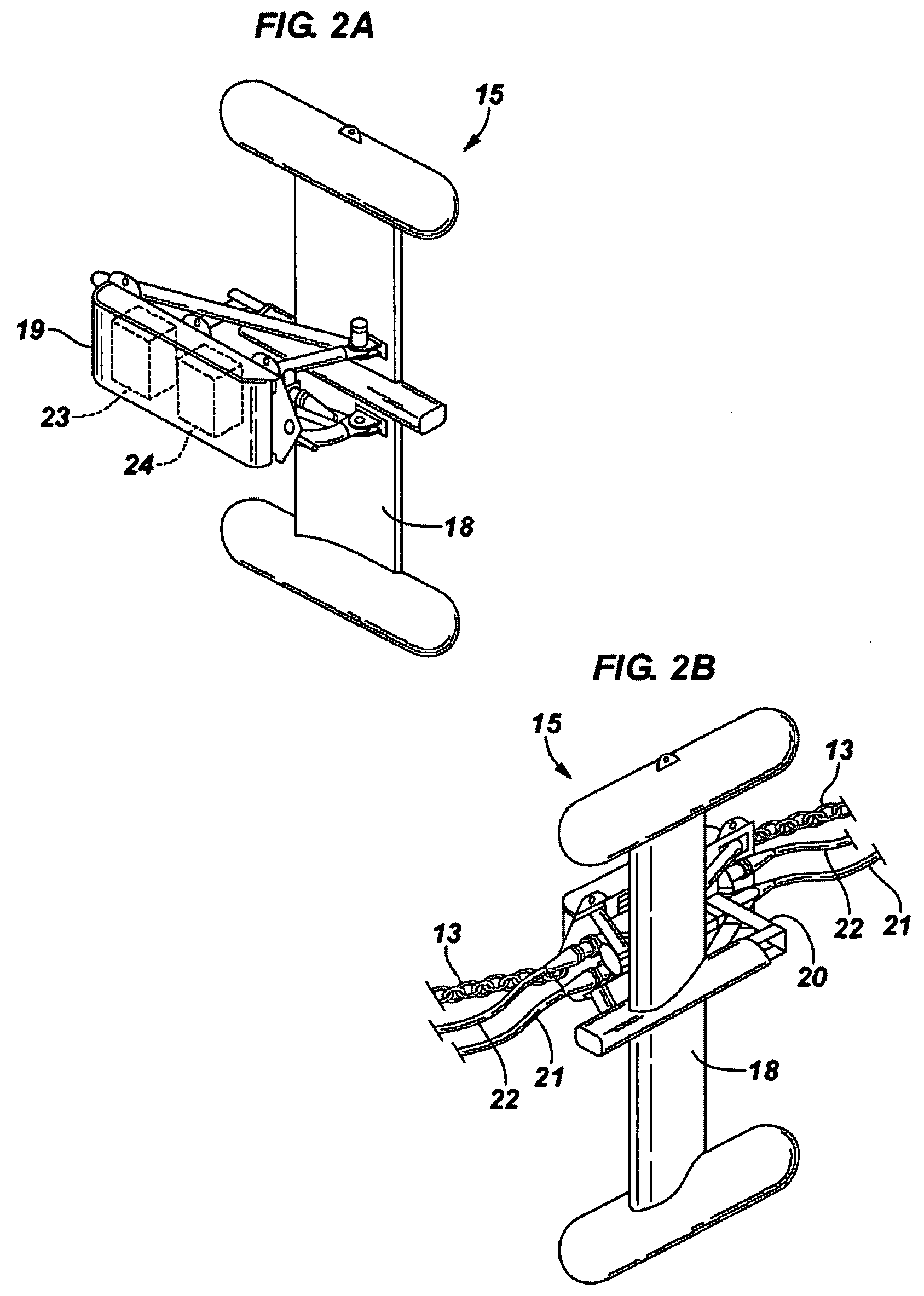Systems and methods for steering seismic arrays
a seismic array and steering technology, applied in the field of seismic exploration, can solve the problems of limiting the ability to position source equipment and receivers in different relative positions and orientations, diverting the desired streamer position, and difficult to achieve in a marine survey, so as to avoid gaps in coverage
- Summary
- Abstract
- Description
- Claims
- Application Information
AI Technical Summary
Benefits of technology
Problems solved by technology
Method used
Image
Examples
Embodiment Construction
[0047]The present invention provides systems and methods that may be used for conducting seismic surveys of the subsurface geological formations that underlie a body of water. The nominal offset lateral position of each source is achieved, in accordance with the present invention, by use of a separation cable between one or more source tow members and either a streamer tow member, or in the case of a pure source vessel, a deflector tow member.
[0048]FIG. 1 is a side view of a tow vessel 12 towing a seismic source, including source array 11, by a source tow member 13. A source array float 25 has several acoustic source members 14 suspended therefrom. Source members 14 may be compressed air guns, which are fired to generate acoustical waves that are reflected from the subsurface geological features back to receivers (not shown) during a seismic exploration. Source members 14 may be other acoustical-wave generation device, such as explosives, percussion devices, and the like. A deflecti...
PUM
 Login to View More
Login to View More Abstract
Description
Claims
Application Information
 Login to View More
Login to View More - R&D
- Intellectual Property
- Life Sciences
- Materials
- Tech Scout
- Unparalleled Data Quality
- Higher Quality Content
- 60% Fewer Hallucinations
Browse by: Latest US Patents, China's latest patents, Technical Efficacy Thesaurus, Application Domain, Technology Topic, Popular Technical Reports.
© 2025 PatSnap. All rights reserved.Legal|Privacy policy|Modern Slavery Act Transparency Statement|Sitemap|About US| Contact US: help@patsnap.com



